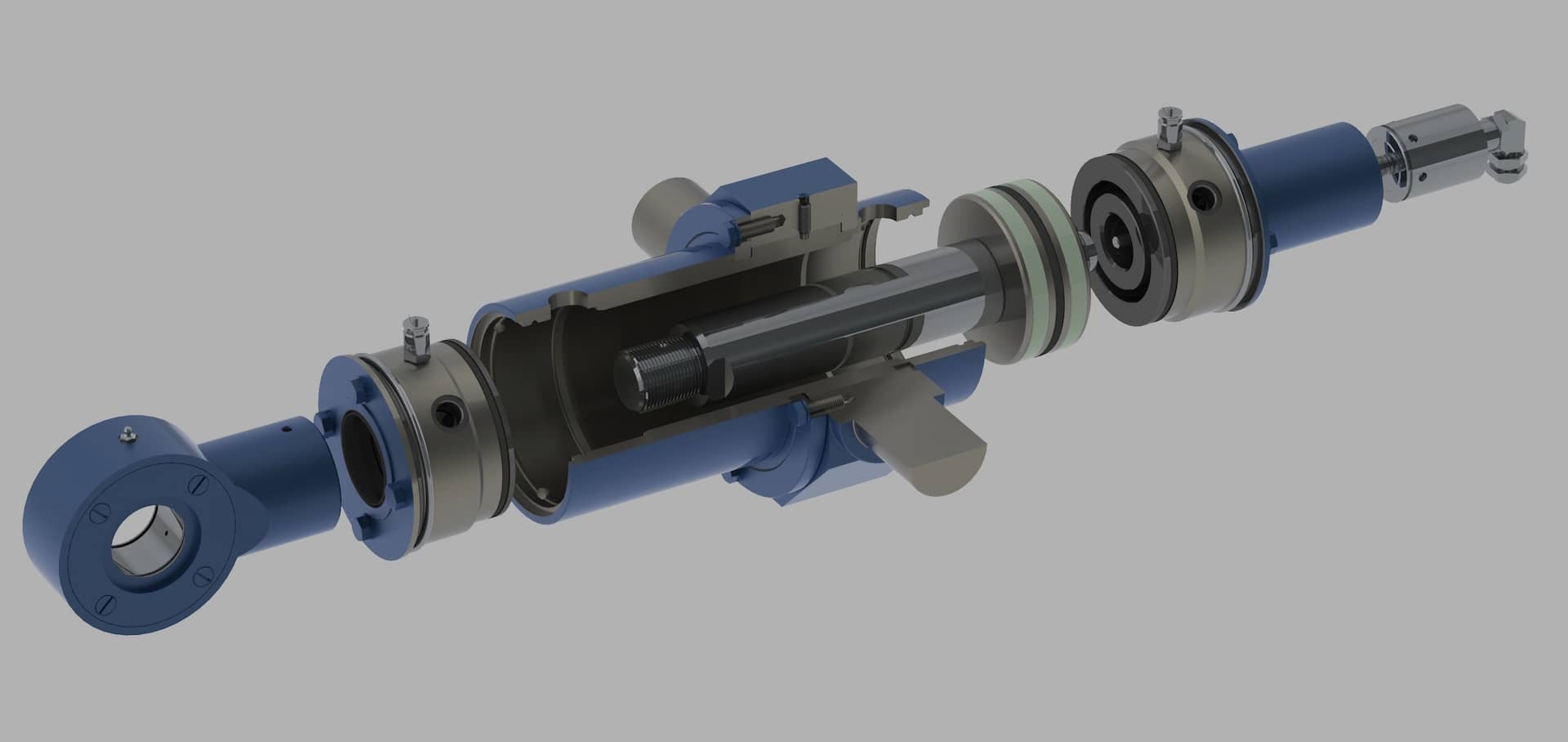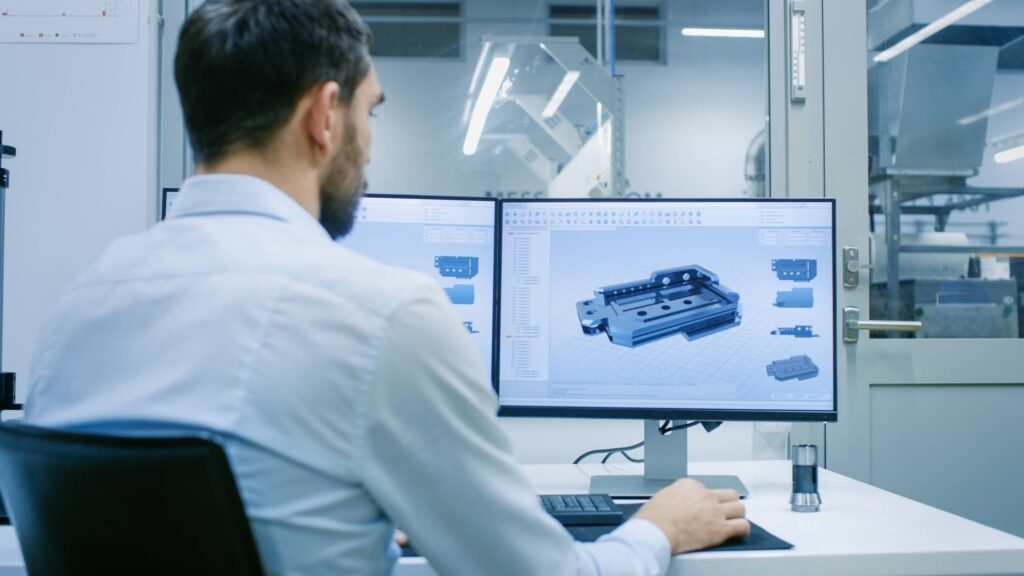

Originally published on fastradius.com on March 11, 2021
The terms “design for manufacturing and assembly” (DFMA) and “design for assembly” (DFA) refer to a set of practices and principles that seek to tailor the conceptual and design phases of product development to the given manufacturing method and in such a way that ensures the ease and cost-effectiveness of production and assembly.
DFA frameworks have taken a number of different forms over the decades, beginning in earnest during the 1970s. One pioneering development was Hitachi’s Assembly Evaluation Method (AEM), which used a point-loss standard to rate the ease of assembly for a particular product (for automatic assembly, in particular). The concept of “design for assembly” as we know it today was coined in 1977, laying out criteria and strategies for determining whether a given product makes a suitable candidate for automated assembly, as well as the ideal assembly system and degree of automation.
Designing a part for assembly may coincide with improving its functionality, quality, and consistency. Further, adhering to design for assembly principles can help reduce necessary production equipment and part inventory (in many cases, these secondary benefits actually become a more significant selling point than the reduced assembly costs). Following DFA guidelines can also help to highlight potential design issues early in the product cycle — which can help streamline the prototyping process and further reduce production expenses.


Here’s a quick primer on how to start incorporating DFA principles into your product development processes:
The number one rule of DFA? Combine parts whenever possible so long as it doesn’t impact the viability of the part. Lower part counts can lead to faster final assembly.
However, minimizing part count isn’t the same as eliminating features from the part. Far from it, in fact — this practice can be helpful in reducing the number of fasteners needed and eliminating unnecessary labor costs.
One specific way to reduce part count is to incorporate fasteners directly into the part itself (rather than requiring screws, bolts, or other additional components). Snap-fits and living hinges are two common design for assembly templates for fasteners that don’t require any additional tools or specialty equipment to construct. Screws and fasteners may be a necessity for particular parts and applications, but, in general, they should be eliminated if possible.
A general guideline when it comes to symmetry and assembly: parts should either be symmetrical so that they are easy to orient during the assembly process, or they should be visibly asymmetric so that they can be easily picked out and oriented.
Avoid designing left- or right-handed parts (as this could essentially double your tooling needs), even if this leads to obsolete or unnecessary features that do not otherwise interfere with the part’s function.
Including self-aligning features between the parts that prevent different components from attaching incorrectly is another way to increase the efficiency of the assembly process.
Fasteners are notorious for requiring significant assembly labor. As such, ensuring that the orientation of each part is easy to determine is critical to keeping assembly fast and cost-effective. Even something as simple as a notch on a round part can do a lot to streamline the process.
Modern machining and tooling equipment is capable of achieving incredibly tight tolerances. However, not every product will benefit from such strict standards — the cost of machining parts and tools with such precise tolerances can quickly become incredibly expensive and time-consuming, undoing any cost or efficiency benefit.
Assemblies with multiple parts machined to extremely tight tolerances also increase the risk of performance issues if one or more of the components is out of spec. Allowing your tolerances to loosen a little can often helps cut costs and improve the resiliency of your designs at the same time.
Commercial off the shelf (COTS) parts are, as the name suggests, parts that you can purchase from a supplier — rather than manufacture yourself. Common COTS parts include components like enclosures, springs, gears, pins, sensors, and more. These parts are fairly standardized, and most assembly workers and automated assembly solutions understand what is required to use and assemble them.
Keeping your custom machining and fabrication needs to a minimum helps streamline the design process, while also reducing barriers to procuring adequate inventory and raw materials or components. This benefit is especially valuable for parts that may see demand surges in the future.
Using a single tool for the entire assembly — or better yet, the entire product line — can improve the energy-, labor- and cost-efficiency of both assembly and disassembly.
If an assembly uses different screw or fastener types in different sections, each additional fastener type will require an additional tool during the assembly process. Don’t mix socket heads with hex heads when one or the other will do.
The effective application of design for manufacturing and assembly principles is critical in today’s on-demand world. However, taking advantage of the full range of benefits afforded by DFMA guidelines often requires juggling many factors — including design software selection and use, an application’s technical requirements, environmental considerations, materials selection and sourcing, budgetary restrictions, tight timelines, and more.
Partnering with an on-demand manufacturer with extensive design and engineering expertise is key to getting ahead in today’s competitive marketplace. That’s where SyBridge comes into the picture. We take pride in making new things possible and harnessing the latest and best technologies to remake tried-and-true legacy components with improved efficiency. We also offer a range of product advisory services to help develop and prepare your parts for production. Contact us today to learn more.
Forget typical cycle times. We're pushing the boundaries of conformal cooling. While traditional approaches deliver…
Forget typical cycle times. We're pushing the boundaries of conformal cooling. While traditional approaches deliver…
From left to right: Brayden Janak (apprentice); Logan Vifaquain (CNC machining, Programming and CMM); Ron…
SyBridge Technologies is proud to announce we have been awarded the 2023 General Motors Supplier…
Today, designers and engineers are accustomed to working with digital tools in their day-to-day jobs.…
Optimizing Your Injection Molding Process for Cost-Effective Manufacturing Excellence In today’s competitive landscape, manufacturers are…